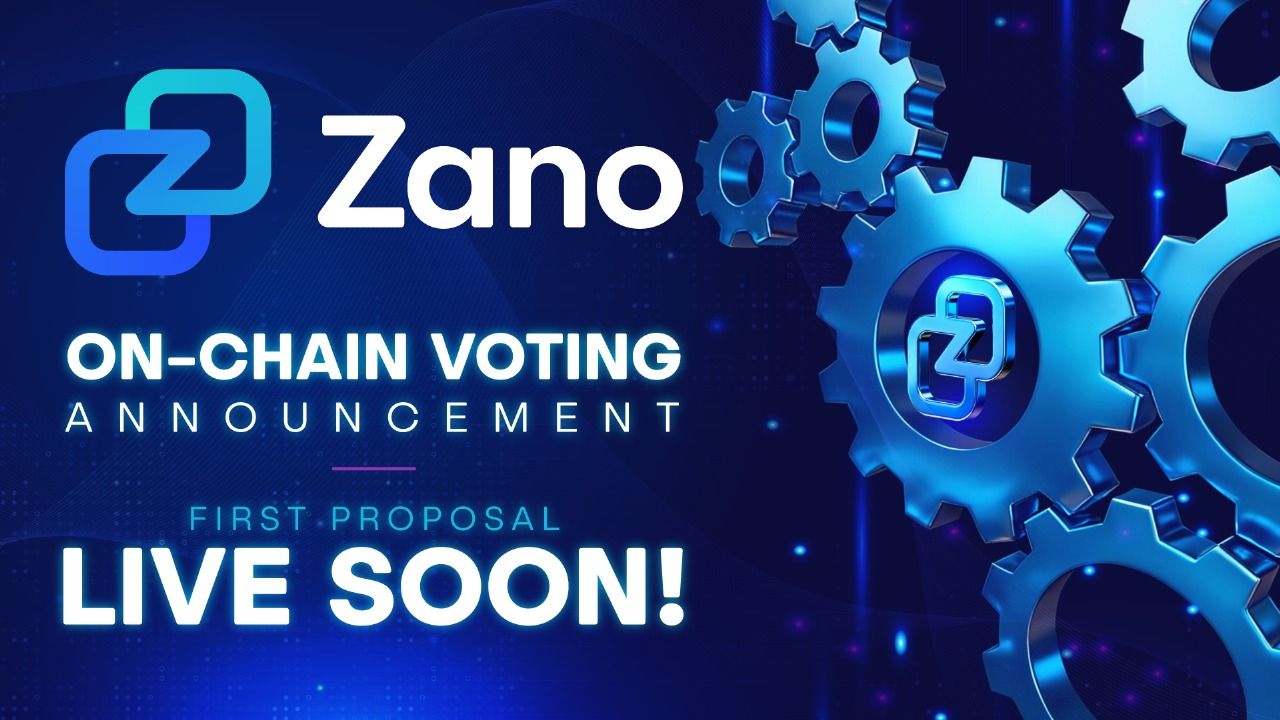Introducing the Zano On-Chain Voting system

The time has come to take the next step in Zano’s commitment to decentralization: community on-chain voting. For the first time ever, stakers will be able to directly signal their stance on proposals that shape the ecosystem.
As the Zano ecosystem grows, it becomes increasingly important to identify the projects and integrations that the community widely endorses. That’s where on-chain voting comes in.
The first public vote goes live next week, Friday 24th. This initial vote will focus on asset whitelisting for Zano Wallets and Zano Trade, helping to establish a community-driven approach to determining which projects receive visibility within the Zano ecosystem.
What On-Chain Voting Is (and Isn’t)
This voting system is designed to reflect the will of the community on ecosystem-facing matters, for example, deciding which assets should appear in official wallet interfaces or in Zano Trade.
It’s important to note what on-chain voting is not: it’s not meant for engineering decisions or technical aspects of the protocol. The Zano Core Team will continue to steward the project’s technical roadmap, ensuring network security, scalability, and privacy features remain uncompromised.
For now, the Core Team will be responsible for putting forward proposals, but the decision-making power lies with you, the community of stakers. Remember that anyone can stake Zano, and thus vote, with no minimum amounts.
How It Works
To vote, stakers sign the blocks they find with the vote option they choose. This mechanism is similar to miner signaling in Bitcoin, but adapted for proof-of-stake.
Votes (or “signals”) are attached to blocks, so the more staking power you have, the more blocks you will have signed. No voter needs to reveal their identity. In this way, the system provides both transparency of results and privacy of individual choice.
The exact privacy of these votes is as strong as the privacy of your staking setup, meaning you still need to protect your IP. You can do so by following our security recommendations here.
Over time, as more stakers participate, a clear signal emerges, showing where the community stands on a given proposal.
First Proposal: Whitelisting of Confidential Assets
The first on-chain vote is scheduled to go live next Friday, 24th October, and will last 2 weeks.
This proposal asks the Zano community to vote on whether to officially add the following Confidential Assets (CAs) to the Zano asset whitelist:
- BTCX
- ETHX
- FUSD
If the proposal passes, these assets will be displayed by default when received in all first-party Zano wallets (Zano Desktop and Zano Mobile), providing a seamless and user-friendly experience for managing these tokens.
These assets will also be featured in a highlighted section within the Zano Trade platform.
How to Vote
Given that every time you find a block, you issue a vote, the longer you stake during the voting period, the more blocks and thus voting power you will accumulate. This is why it's important to prepare your setup for voting before the actual voting period begins, thereby maximizing the number of voting blocks you produce.
- To prepare your staking setup for voting, first go to https://vote.zano.org.

- Choose your preferred option (usually Yes/No), then click "Download Config".
- Place the downloaded voting_config.json file in your Zano data folder, located on:
Windows
C:\Users\<USERNAME>\AppData\Roaming\Zano
MacOS
/Users/<USERNAME>/Library/Application Support/Zano
Linux
~/.Zano
- Restart your desktop wallet for the new configuration to apply.

Estimating Voting Power
The amount of votes you emit is equal to the amount of blocks your staking setup creates, which also equals the amount of ZANO you find during the voting period (1 Block = 1 ZANO Reward).
Let's make an example with 10.000 ZANO.
Since voting power equals staking power, we can simply use existing staking calculators, such as the one at https://zanostats.com/staking.

According to the calculator, with this amount of ZANO we should make (approximately) 22 ZANO per month. If the voting period were to last a month, then we would get 22 votes, assuming we stake and signal throughout the entire period.
Since the first proposal lasts 2 weeks, we just have to extrapolate how much ZANO we would earn in that period (14 days) using the given monthly amount.
So approximately half: 11 ZANO, equaling 11 votes.
Looking Ahead
The launch of the Zano On-Chain Voting System marks a significant step in enhancing decentralization and transparency within our ecosystem. As new projects, assets, and integrations come to Zano, this process will ensure the community has a meaningful voice in shaping the path forward.
Remember, the first vote on asset whitelisting will begin on the 24th, but you need to prepare beforehand if you want to maximize your voting power. Stay tuned, and make sure your node is ready to stake and signal.
As always, thank you for your support, zAnons!
